

The arrival of 2.4GHz wireless technology has revolutionized wireless gaming headsets. Now they are more reliable than ever before and some can even rival their wired counterparts when it comes to connection latency and sound quality.
There are myriad different styles, designs, and hardware inclusions — it’s enough to make your head spin. So, to simplify things, I’ve done the hard part for you by getting hands-on and putting each device through its paces. The list below only includes those that have excelled in my extensive testing. The best gaming headsets strike a balance between performance, usability, and extras, placing them in a league above the rest.
Why you should trust me: I’m not just a tech expert, I’m also a gaming enthusiast. I’m always on the hunt for better gear to make my own experience better.
I know what gamers want. Yes, I’m looking for technologies like spatial audio and Active Noise Cancellation in my gaming headsets, too. If a product makes the cut, I want to spread the word. If it doesn’t, I think it’s my obligation to let you know. I love to play, and I want you to have the best gaming experience as well.
For a rundown on how I test wireless gaming headsets and for buying advice, you can read my article “How we test gaming headsets at PCWorld.“
Updated May 29 2024: I’ve added the Turtle Beach Stealth 600 Gen 3 recommendation to this list: This headset sounds great in games and has a long battery life of up to 80 hours. It also has a lot of controls, some of which are remappable so that you can personalize your gaming audio exactly as you wish. Learn more in the summaries below.
Logitech G Astro A30 Wireless – Best wireless gaming headset
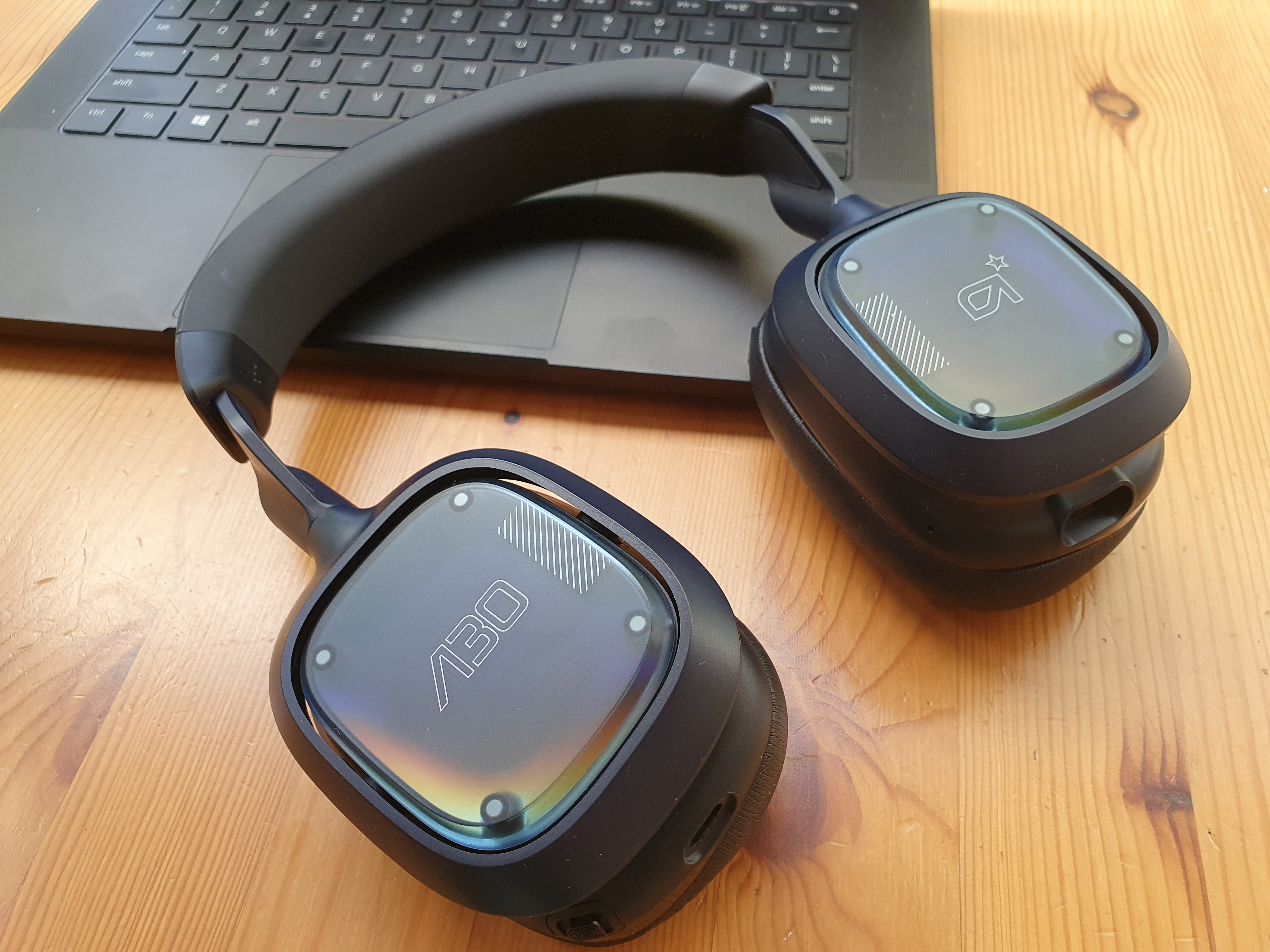
Pros
The styling is very appealing The 40mm drivers produce a very natural sound The cans are very soft and comfortable
Cons
Some of the moving parts feel a bit tight Leatherette in the cups can get sweaty on hot days Battery life is decent but not excellent Price When Reviewed:229.99Best Prices Today:$189.45 at Amazon$229.99 at Best Buy$229.99 at Lenovo USA
Why I like the Logitech G Astro A30 Wireless
Right out of the box, this headset looks fantastic, with fashionable Astro logos on both left and right earcups and very plush leatherette coverings over cushy memory foam, which feels very soft against your ears. As if that wasn’t enough, you can also swap out the magnetic speaker tags on the outside for pre-made designs of your own choosing, to further personalize your look.
The Astro A30 also has a refined and natural sound profile, thanks to very finely tuned 40mm audio drivers. But where this headset truly shines is in the connectivity department; it features low-latency 2.4GHz and Bluetooth wireless connectivity, as well as wired connectivity, so it can connect to just about anything, including a PC, PlayStation 5, Xbox X/S, and Mac. You can also mix and balance your different audio sources so you never have to miss a thing while playing.
Who should buy the Logitech G Astro A30 Wireless
Gamers who want to personalize their headset’s look, but also want decent audio, great connectivity, and excellent cross-compatibility. It’s also a great option if you like the convenience of listening to multiple audio sources as you play.
Read our full Logitech G Astro A30 Wireless review
Logitech Astro A50 – Best wireless gaming headset runner-up

Pros
Charging cradle is smaller and still very unique Switches to the more reliable 2.4GHz band (finally) Comfortable and durable
Cons
Middling battery life Poor noise isolation Expensive Price When Reviewed:$299.99Best Prices Today:$230.05 at Amazon$249.99 at Best Buy$249.99 at GameStop
Why I like the Astro A50
Although it doesn’t come cheap, the Logitech Astro A50 packs in more gamer convenience than most similarly priced gaming headsets. In our PCWorld hands-on review we considered the A50’s onboard controls, which include an easy-to-locate volume wheel and a chat/game channel mixer, to be best in class. The mixer allows you to easily switch between your game audio and chat programs in an instant.
As well as a refined audio profile, the A50 features a sleek and convenient charging cradle that displays your chosen EQ profile and your selected audio mode — Dolby or stereo. The headset uses the current best-standard 2.4GHz band Wi-Fi signal for the most reliable wireless connectivity. It’s also comfortable and durable.
Who should buy the Astro A50
Serious gamers who like to tinker with EQ settings, mix audio sources, and like the convenience of being able to know what profile they’re using at the drop of a hat. It’s also a fine option for gamers who want charging to be as effortless as possible between games.
Read our full ID10277 (2019) review
Turtle Beach Stealth 600 Gen 3 – Best wireless gaming headset under $100

Pros
Clear refined audio profile Great control selection that you can personalize further Attractive and comfortable design
Cons
PC and PlayStation versions lack Xbox compatibility No USB-A to USB-C adapter Slightly heavier than the previous generation Price When Reviewed:99.99Best Prices Today:$99 at Amazon$99.99 at Best Buy$99.99 at GameStop
Why I like the Turtle Beach Stealth 600 Gen 3
To me, the Turtle Beach Stealth 600 Gen 3 feels like the first of a new wave of wireless headsets that offer more value for your money. For starters it sounds better and its battery life of up to 80 hours is a lot longer than the previous generation Turtle Beach Stealth 600 headset (Gen 2).
The Turtle Beach Stealth 600 Gen 3 also has excellent cross-platform compatibility. For example, my Xbox model easily connected to my Xbox X/S, PC, cellphone, Nintendo Switch, and PlayStation 5. It also featured Wi-Fi and Bluetooth so that I could switch audio sources on a dime.
The headset also had a lot of convenient controls on its left earcup. Some of these, like the power and Bluetooth pairing buttons, featured multiple functions, so I always had deep gamer functionality at my fingertips. A remappable chat / mixer wheel and Mode button, allowed me to have my most used controls on hand whenever I needed them.
Who should buy the Turtle Beach Stealth 600 Gen 3
Casual gamers who want an all-around great gaming headset with decent audio and a long battery life should go for this headset. It’ll also suit players that like to have control of those critical audio changes they make in their headset’s companion app. Lastly, the Stealth 600 Gen 3’s price tag of just $99.99 also makes it a great option for gamers on a budget.
Another good option for gamers on a budget is the HyperX Cloud Core Wireless. This gaming headset costs just $99.99 but features a solid aluminum frame, clear audio, a detachable boom microphone and spatial audio courtesy of DTS Headphone:X.
Read our full Turtle Beach Stealth 600 Gen 3 review
Razer Blackshark V2 Hyperspeed – Best midrange wireless gaming headset

Pros
Ultra-light and comfortable Excellent microphone quality Long-lasting battery life and fast charging option Versatile connectivity options
Cons
Sound tuning favors esports Material quality could be better Non-detachable microphone Price When Reviewed:$129.99Best Prices Today:$129.99 at Amazon$129.99 at Best Buy$129.99 at Razer
Why I like the Razer BlackShark V2 Hyperspeed
The Blackshark V2 Hyperspeed is an esports worthy headset that costs a lot less than the premium headsets that esports players usually go for. The standout is the headset’s microphone, which is near broadcast quality. The V2 Hyperspeed is also very lightweight — it weighs less than 10 ounces, so you can wear it for marathon gaming sessions and not feel like you need to take it off.
In regard to sound, the V2 Hyperspeed sports large 50mm audio drivers that produce audio across a frequency range of 12Hz to 28KHz. It has a low bass so sounds like explosions are particularly noteworthy in games.
Who should buy the Razer Blackshark V2 Hyperspeed
If you’re aspiring to start competing in esports competitions and don’t have a huge budget to drop on a $300 headset, then the Blackshark V2 Hyperspeed is just the ticket. Its excellent microphone quality also makes it a great option for players wanting to record in-game videos.
Read our full Razer Blackshark V2 Hyperspeed review
SteelSeries Arctis Nova 7X – Best midrange wireless gaming headset runner-up
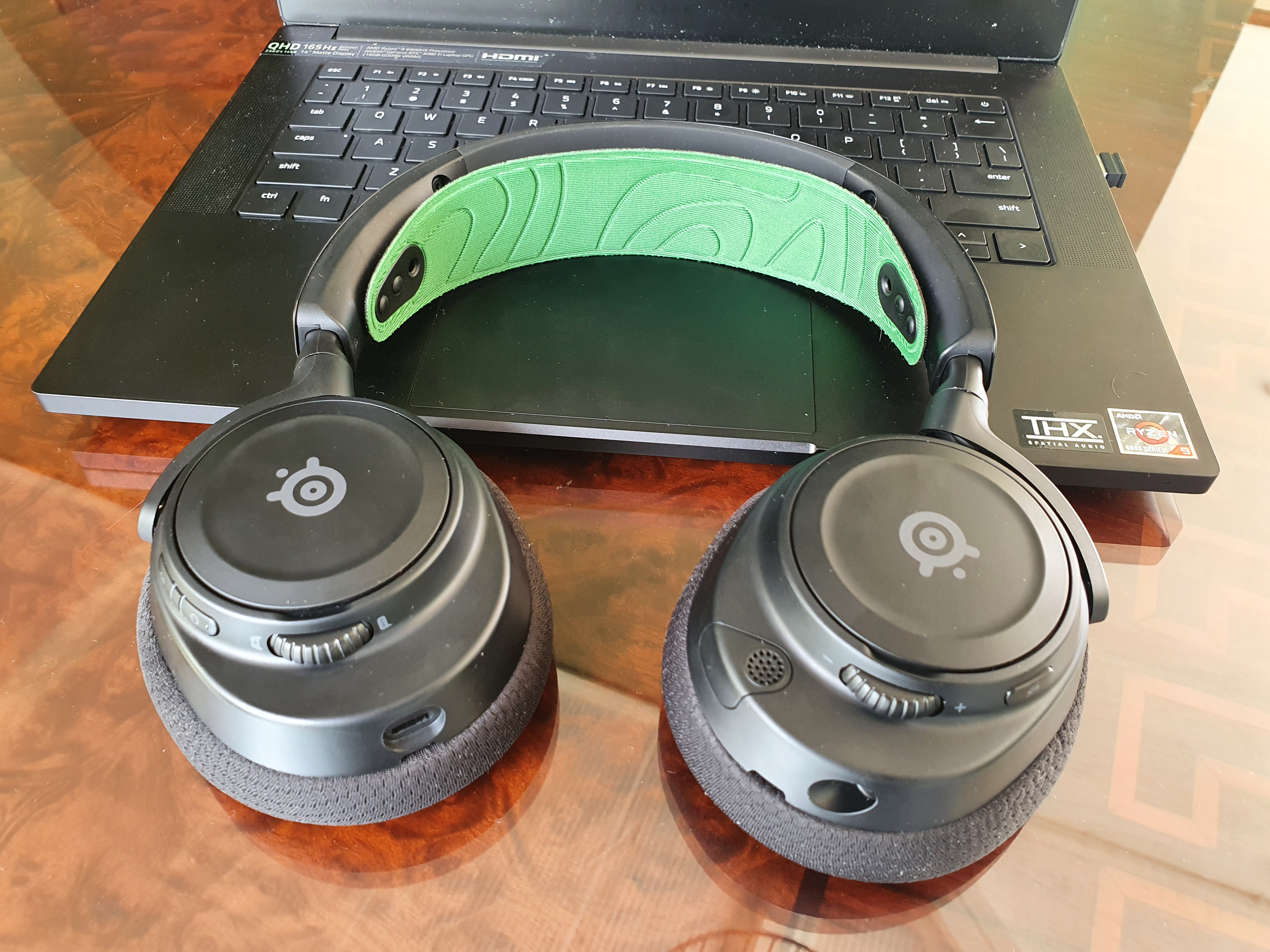
Pros
Great sound quality, especially in the mids A lot of metal makes it very solid and robust A very comfortable design
Cons
Passive noise cancellation isn’t great It’s more expensive than some rivals The mushroom shaped dongle can be finnicky Price When Reviewed:199.99Best Prices Today:$159.99 at Amazon$159.99 at Best Buy$179.99 at GameStop
Why I like the SteelSeries Arctis Nova 7X
The SteelSeries Arctis Nova 7X may not be as flashy as it’s pricier sibling the SteelSeries Arctis Nova Pro, but it easily caters to all your gaming needs, offering great sound quality, a robust metal frame, and simultaneous 2.4GHz wireless and Bluetooth connectivity that lets you stream music from your smartphone while missing absolutely none of your game’s audio.
What’s more, when it comes to comfort the 7X actually outdoes the Nova Pro — its soft mesh ear coverings just don’t get sweaty like the Nova Pro’s leatherette ones do in hot weather. On top of that, the Arctis Nova 7X has excellent cross-platform compatibility. In fact, in our playtesting we had no trouble connecting it up to just about anything with a USB-C port.
Another worthy contender in the midrange wireless category is the Logitech G935. This headset gets a lot right, featuring quality audio with a rich bass presence, a clear-sounding microphone, and an onboard dongle storage compartment.
Who should buy the Arctis Nova 7X
Gamers who want a jack-of-all-trades headset with easy-on-the-ears clamp pressure and comfortable earcups that also won’t cost the kitchen sink.
Read our full SteelSeries Arctis Nova 7X review
HyperX Cloud III Wireless – Best battery life
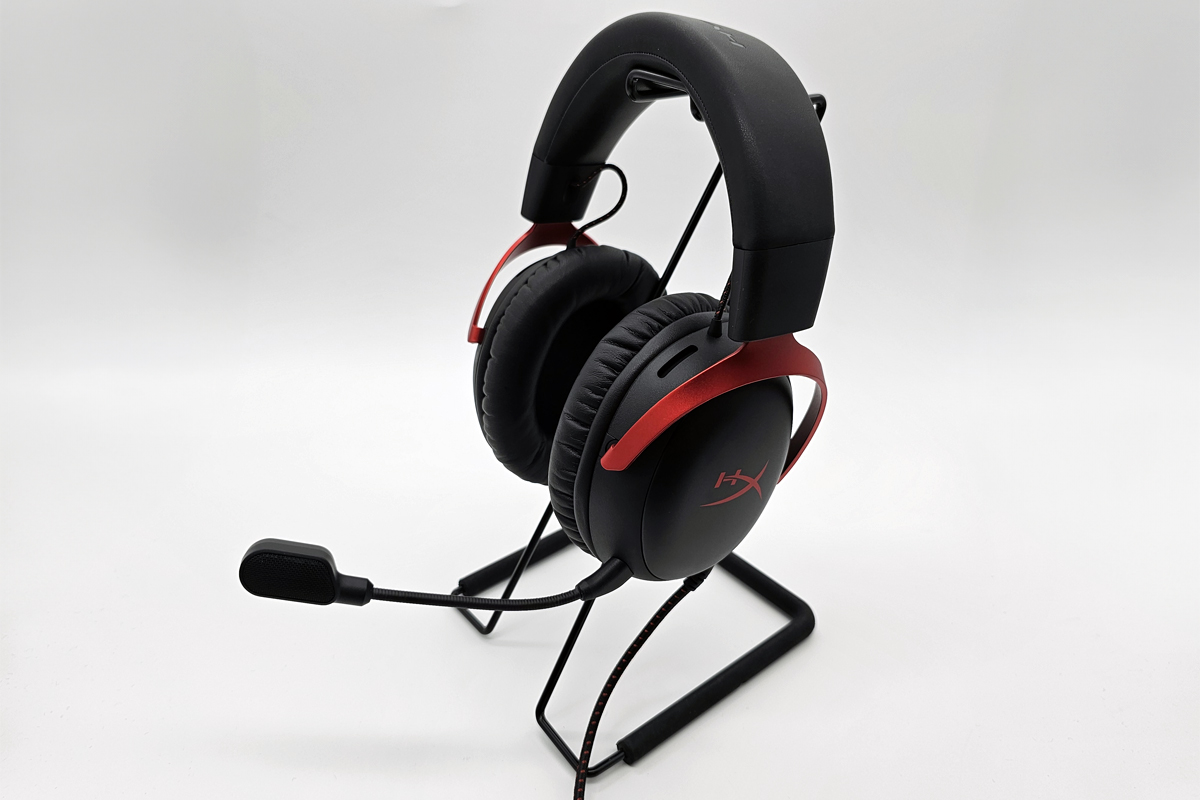
Pros
High-quality design and good workmanship Multi-platform compatibility Detachable microphone Above-average battery life
Cons
Occasional sound fluctuations in DTS Surround Sound Microphone adjustment required in noisy environments No Bluetooth Price When Reviewed:$169.99Best Prices Today:$129.99 at Amazon$129.99 at B&H$129.99 at Best Buy
Why I like the HyperX Cloud III Wireless
In our testing of the Cloud III Wireless, we found it produced a deep bass and clear treble signature that allows you to pick up even the slightest audio nuances in games. The sound is delivered via a 2.4GHz Wi-Fi signal that enables a delay-free transmission. Although it doesn’t feature Bluetooth connectivity, it does have other convenient features. For example, the Cloud III Wireless’s microphone is detachable, so you can wear it like a pair of headphones when on the go.
The Cloud III Wireless’s design resembles most other HyperX Cloud core headsets, in that it features black and red styling and plush faux-leather earcup coverings over a soft memory foam that molds to the contours of your head. The HyperX Cloud III Wireless has a very decent battery life — HyperX claims it can provide 150 hours at 50 percent volume, which means you don’t have to constantly recharge between games.
Who should buy the HyperX Cloud III Wireless
The HyperX Cloud III Wireless doesn’t have Bluetooth so it’s best suited to dedicated PC gamers. Its excellent battery life will especially suit gamers that don’t like having to frequently charge their headset.
Read our full HyperX Cloud III Wireless review
Audeze Maxwell Wireless – Best audio quality

Pros
Impressive audio that sounds warm and full-bodied Strong and robust design Excellent cross compatibility
Cons
It’s quite heavy and large The headband isn’t extendable The software app is too simple Price When Reviewed:329Best Prices Today:$253.95 at B&H$299 at Amazon$299.99 at Best Buy
Why I like the Audeze Maxwell Wireless
The Audeze Maxwell Wireless produces the kind of audiophile-grade sound you’d expect from a high-end studio headset, yet it’s expertly tailored for gamers. Its sound quality comes courtesy of 90mm planar magnetic drivers, which are a change from the 40mm or 50mm neodymium drivers we see in most gaming headsets. The Maxwell Wireless is a very versatile device, it sports all three connectivity types: 2.4GHz Wi-Fi, Bluetooth, and wired connectivity via its USB cord. It also has solid cross-compatibility — our Xbox version worked with PC, Mac, Xbox 360, Xbox X/S, PlayStation 5, Nintendo Switch, and Android and iOS devices.
Large, round-shaped cups, instead of oval or square cups, ensure the Maxwell Wireless fits even the largest of ears. Their distinctive shape also gives this headset a unique look. The cups are also very comfortable — they feature a luxurious leatherette material over soft memory-foam cushioning. The headband and yokes are both made from metal, and that does make the Maxwell Wireless quite heavy. Still, you can quite easily wear them for three hours straight and not feel any discomfort.
Who should buy the Audeze Maxwell Wireless
Anyone who wants the very best sound quality you can possibly get in a gaming headset. If your game has a rich and detailed soundscape, this headset will convey it better than any headset you can currently buy.
Read our full Audeze Maxwell Wireless review
SteelSeries Arctis Nova Pro Wireless – Best audio quality runner-up

Pros
Great quality audio Dual wireless functionality Lots of software options for personalization
Cons
Quite expensive Active Noise Cancellation won’t block out all external sound Price When Reviewed:$349.99Best Prices Today:$279.99 at Amazon$349 at Walmart$349.99 at Best Buy
Why I like the SteelSeries Arctis Nova Pro Wireless
The SteelSeries Arctis Nova Pro features just about everything you could possibly want in a wireless gaming headset, including excellent sound quality, style, comfort, and a durable metal headband. With support for 2.4GHz Wi-Fi and Bluetooth wireless, as well as wired connectivity, the Arctis Nova Pro is easily compatible with your PC, laptop, or Xbox device. It also comes with a GameDAC base controller that lets you switch between your PC and Xbox One or Xbox X/S at the press of a button.
The headset incorporates technologies that elevate your listening experience, including Active Noise Cancellation, 360 Degree Spatial Audio, and Pro Grade Parametric EQ. All this functionality will set you back $349.99, which admittedly isn’t cheap. But for a headset that sounds this impressive and can actually make you a better gamer, that could be a price worth paying.
Who should buy the Arctis Nova Pro Wireless
This headset is in many ways superior to most gaming headsets on the market. I’d recommend it to serious gamers who want Hi-Res audio and spatial sound in their games. If you like experimenting with EQ settings to create audio profiles, this headset is also ideal for that.
Read our full SteelSeries Arctis Nova Pro Wireless review
Turtle Beach Stealth Pro – Best for FPS games
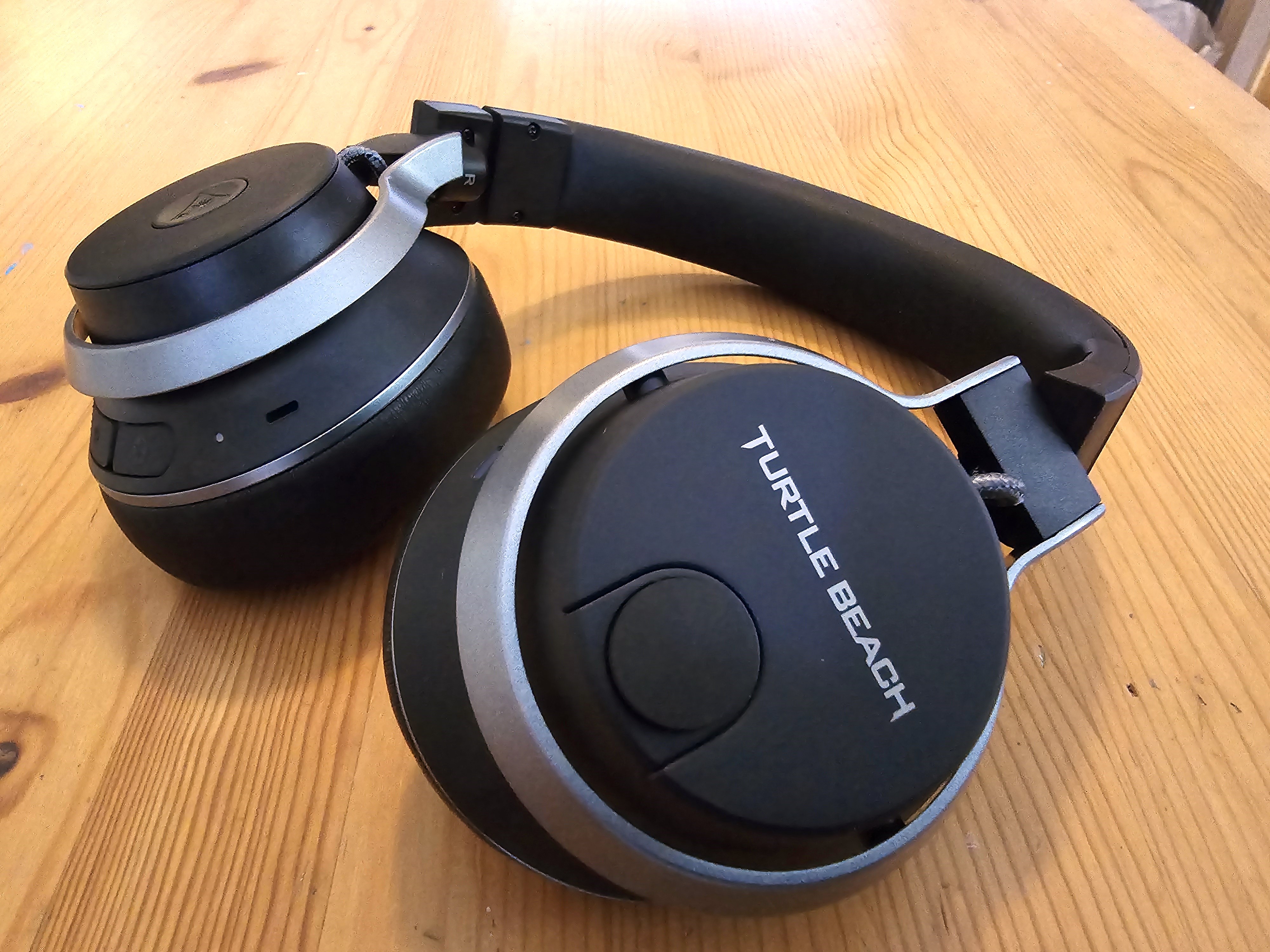
Pros
Punchy audio that’s ideal for FPS games Solid attractive and versatile design Very good noise cancellation
Cons
Lacks support for spatial audio The batteries need frequent changing It’s expensive Price When Reviewed:329.99Best Prices Today:$228.99 at Amazon$329.99 at Best Buy$329.99 at Turtle Beach
Why I like the Turtle Beach Stealth Pro
These cans look like, and can just as easily pass as, a premium pair of headphones. The cross-platform compatibility is extremely, good too — the Xbox version connects to everything except PlayStation, while the PlayStation version connects to everything except Xbox.
The Stealth Pro packs in a lot of premium functionality, from plush leatherette earpads to dual wireless connectivity (2.4GHz Wi-Fi and Bluetooth) and Active Noise Cancellation, you have lots of tools at your fingertips to elevate your gaming experience. The audio drivers are also especially tuned for FPS games.
Who should buy the Turtle Beach Stealth Pro
Anyone who owns a bunch of gaming devices and wants to use just one premium headset across all of them. Also, since the Stealth Pro’s audio drivers are particularly well-tuned for FPS games, if that’s your jam, then this headset is ideal.
Read our full Turtle Beach Stealth Pro review
Asus ROG Delta S Wireless – Best for casual gaming

Pros
It comes with two sets of earpads to personalize comfort The headband and cups allow for a good amount of head movement The audio sounds great across the spectrum The build quality is robust
Cons
The AI Noise Cancellation could be better It lacks a boom microphone No simultaneous Bluetooth functionality Price When Reviewed:199.99Best Prices Today:$173.07 at Amazon$199.99 at Asus$199.99 at B&H
Why I like the ROG S Wireless
The Asus ROG S Wireless doesn’t boast deep gamer functionality, like simultaneous Bluetooth or a game chat mixer wheel, but what it does have is about as good as it gets for casual gaming. With Bluetooth as well as 2.4GHz Wi-Fi connectivity, it connects easily to PC, Mac, PlayStation 4 and 5, Nintendo Switch, and mobile devices. The headset is one of the most comfortable you will find since it comes with two sets of interchangeable earpads in the box — a plush 100 percent protein leather pair and a cooler hybrid mesh pair. The earcups swivel and tilt giving your head and neck plenty of space to move. The headset is also very robust, featuring a strong metal headband and yokes.
On the sound front, the ROG Delta S Wireless’s 50mm neodymium drivers are extremely loud. They produce a clear sound across the audio spectrum. Slightly less impressive is the headset’s beamforming microphone, which is located inside the headset rather than externally like a boom-style microphone. Its downside is that it can occasionally pick up background noise, which is really the only thing we would have changed about this headset.
Who should buy the ROG S Wireless
Casual gamers — i.e. gamers who value comfort and sound quality and who want the convenience of a headset that they can simply plug in and start playing with.
Read our full Asus ROG Delta S Wireless review
Corsair HS80 Max – Most comfortable design
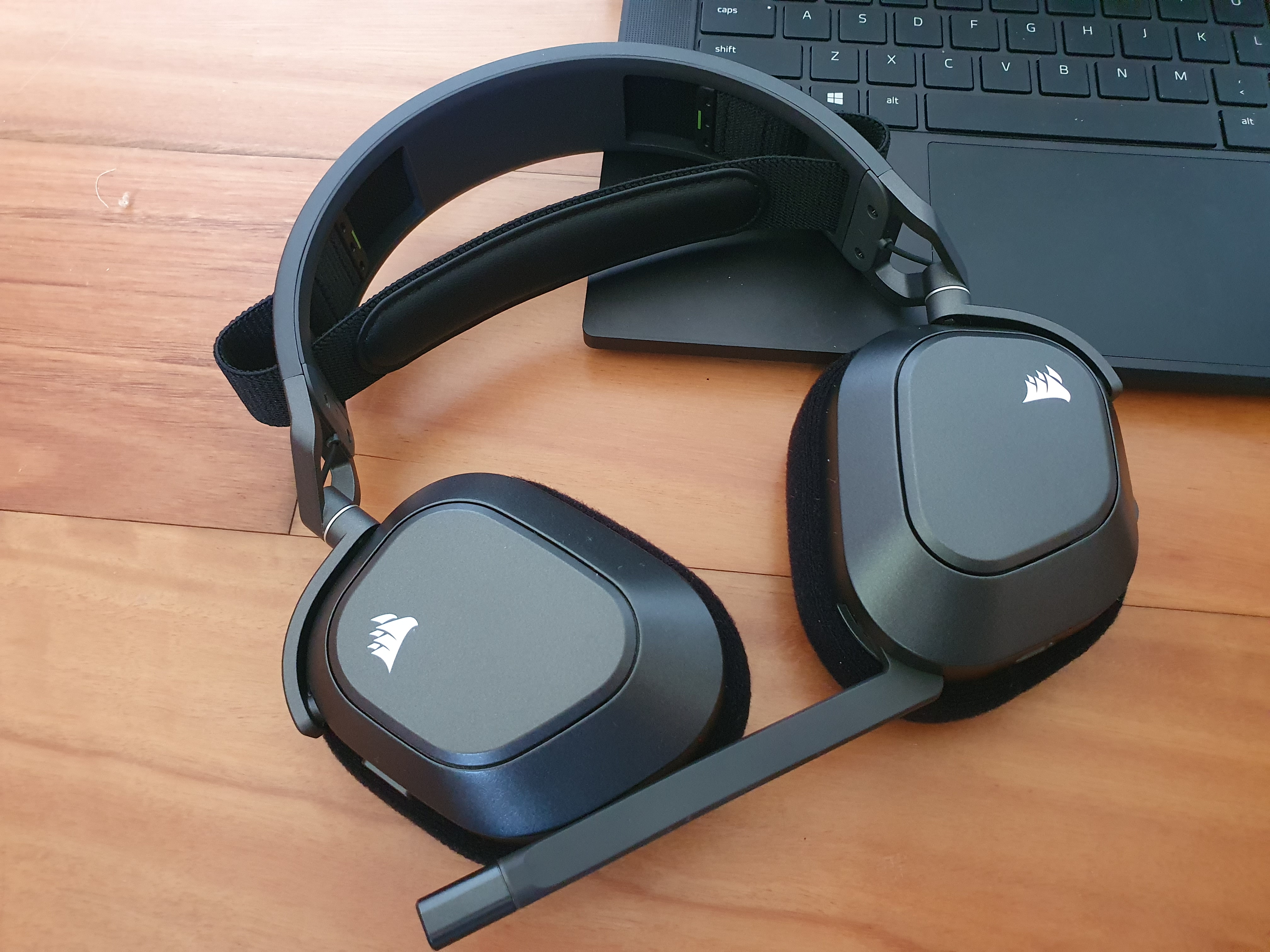
Pros
Great audio performance with neutral mid-tones Lightweight comfortable design Mesh coverings on the earcups minimize sweat Flip-to-mute mic
Cons
The omnidirectional mic is not detachable Lacks true simultaneous audio connectivity for listening to multiple audio sources at once The small RGB light zones feel like an afterthought Price When Reviewed:179.99Best Prices Today:$179.99 at Amazon$179.99 at B&H$179.99 at Best Buy
Why I like the Corsair HS80 Max
It’s unusual for a premium gaming headset to show off lightweight plastic cups instead of metal ones, and mesh fabric material over the earcups instead of plush leatherette ones, but that’s what makes the Corsair HS80 Max so comfortable. Weighing in at just 12.4 ounces, and with breathable mesh fabric that keeps sweat from building up on your ears, you can wear this headset all day long and not experience any discomfort.
But comfort aside, the Corsair HS80 Max is clearly a premium gaming headset — the audio sounds neutral and warm and Dolby Atmos surround sound support gives you excellent directionality in games. The headset throws in a few sweeteners on top of its excellent audio, including a flip-to-mute mic and RGB lighting zones on each ear. While this headset allows you to connect to Bluetooth and 2.4GHz Wi-Fi signals at the same time, true simultaneous audio isn’t possible. Still, a simple Bluetooth control allows you to switch between audio sources at will.
Who should buy the Corsair HS80 Max
Players who especially want a lightweight headset with mesh earcups but don’t want to lose the kind of premium audio fidelity and functionality they’d normally have to forgo to get those features.
Read our full Corsair HS80 Max review
EPOS H3PRO Hybrid – Best microphone
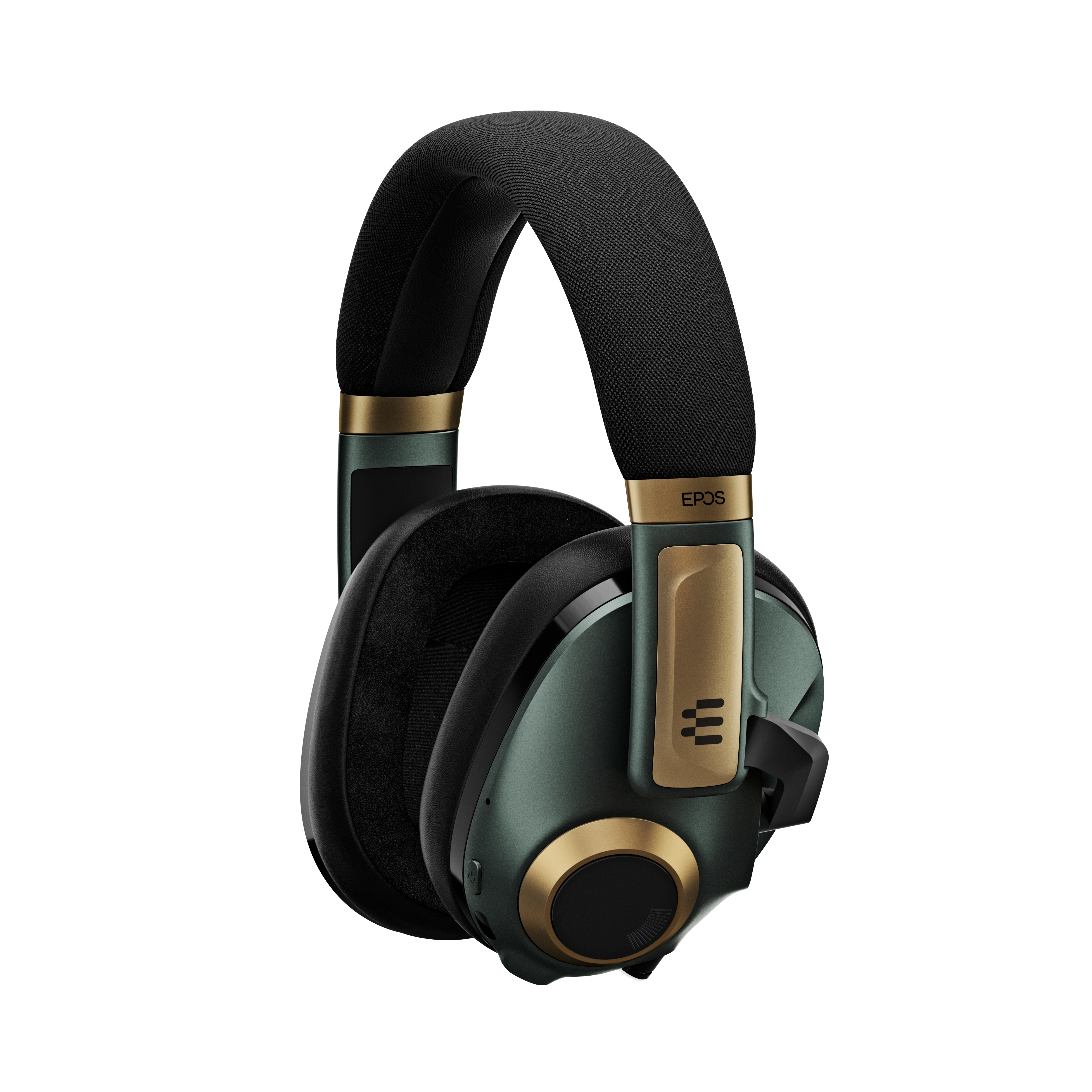
Pros
Produces clear and distortion-free sound The 7.1 surround sound works well and elevates your gaming experience It feels comfortable even on hot days
Cons
The earcups are all plastic unlike some rival gaming headsets The bass can seem subtle at times Price When Reviewed:279Best Prices Today:$98.99 at Best Buy$124.81 at Amazon$279 at EPOS
Why I like the EPOS H3PRO Hybrid
The “Hybrid” in the EPOS H3PRO Hybrid’s name hints at its dual connectivity — it features both wired and wireless options, which means it can hook up to just about all your devices, be it your PC, Mac, console, or smartphone. For wireless connectivity, the H3PRO Hybrid supports low-latency Wi-Fi or Bluetooth 5.2, or you can use both of these options at the same time to voice-chat or listen to music while simultaneously hearing your game’s audio.
The H3PRO Hybrid’s audio is very refined. In our play test it delivered crisp and clear-sounding high and mid tones and balanced bass tones. We were similarly impressed by the headset’s Active Noise Cancellation (ANC) that does a respectable job blocking out ambient noise. Additionally, our testing found that the H3PRO Hybrid’s microphones were some of the best we’ve heard in a wireless gaming headset, faithfully reproducing voices as they sounded. The detachable boom mic is also very easy to remove and replace via its simple magnetic attachment point.
Who should buy the EPOS H3PRO Hybrid
Gamers wanting to sound better in voice chats should consider this headset, which not only has a clear and refined sounding microphone, but also gamer-centric features like Active Noise Cancellation (ANC) and dual wireless functionality with simultaneous audio.
Read our full EPOS H3PRO Hybrid review
Razer Barracuda Pro – Best surround sound
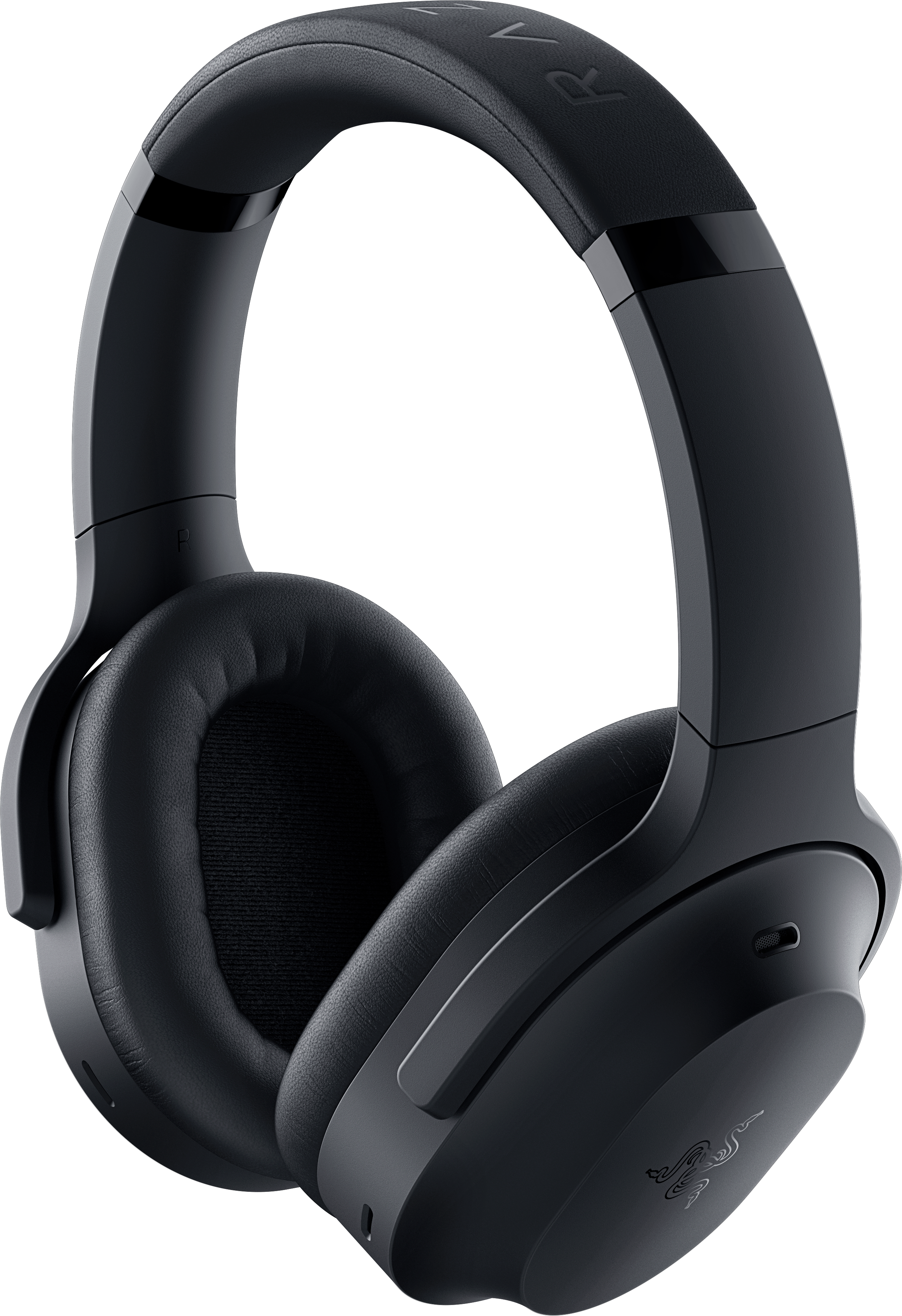
Pros
Excellent audio through the bass, mid, and high tones THX Spatial Audio is a treat in games Lightweight and comfortable design
Cons
No boom mic means the mic audio suffers somewhat ANC works but could be better Price When Reviewed:249.99Best Prices Today:$219.95 at Walmart$238.61 at Amazon$249.99 at Best Buy
Why I like the Razer Barracuda Pro
Gamers wanting a full surround sound experience — either for the strategic advantage that brings, or just for thrills, should dig this headset that features arguably the best spatial audio we’ve heard. The pro-grade Razer Barracuda Pro supports THX Spatial Audio that delivers excellent sound directionality in games like Counter-Strike: Global Offensive and Battlefield I. Razer’s Synapse app also lets you personalize the spatial audio by tweaking the audio’s directionality and creating profiles for specific games and media.
The Barracuda Pro is a little different from other gaming headsets in that it doesn’t have a dedicated boom microphone, relying instead on innocuous slots to pick up the sound of your voice for chats. The advantage of that is that it can pass off as a convincing headphone at any time, making it a highly versatile device.
Who should buy the Razer Barracuda Pro
Players of FPS games are particularly going to love how the Razer Barracuda Pro will give them a jump on opponents. The headset’s THX spatial audio support brings a dimensionality to sound that I barely thought possible.
Read our full Razer Barracuda Pro review
Razer BlackShark V2 Pro (2023) – Best wireless headset for esports
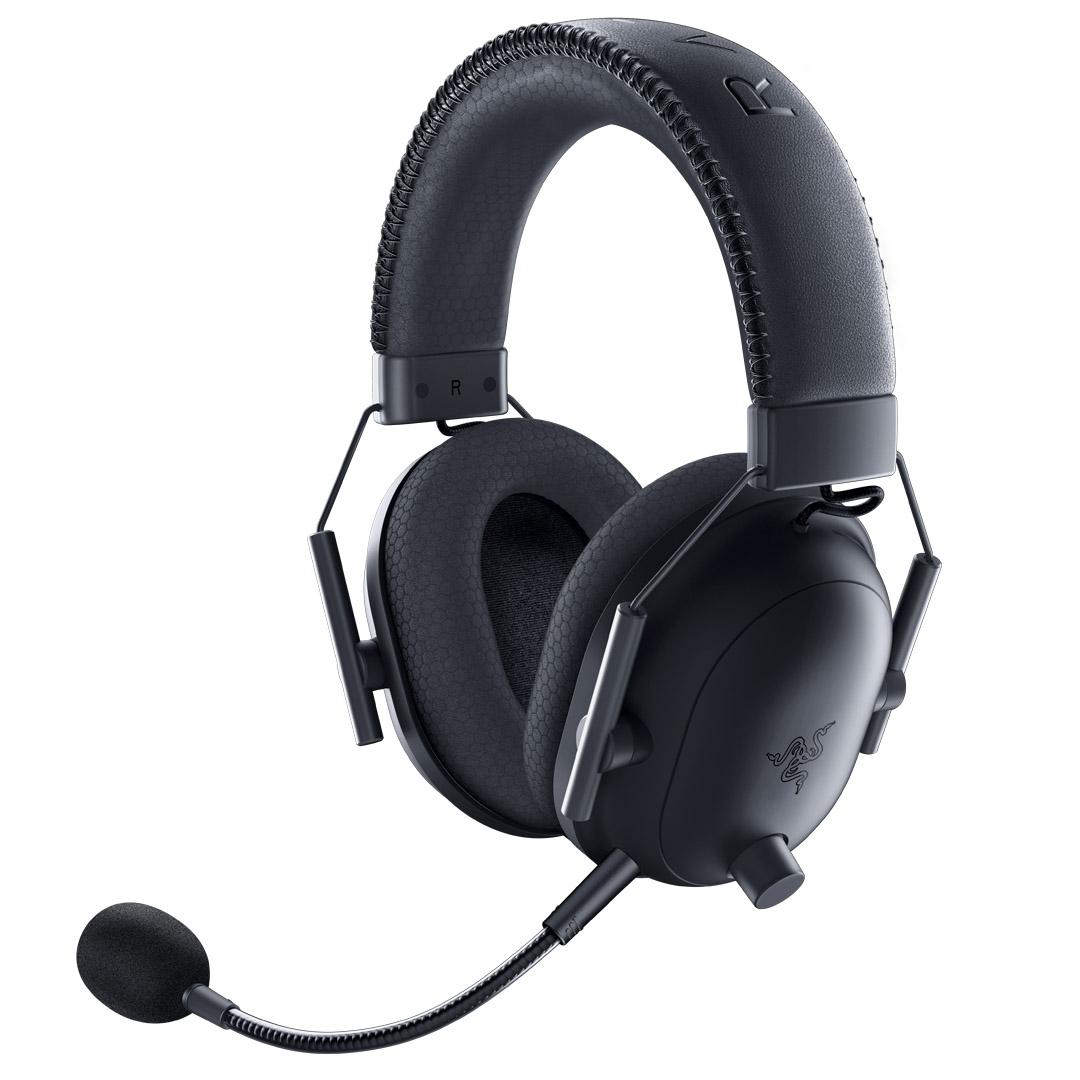
Pros
Comfortable Long battery life Pre-loaded EQ profiles Great microphone
Cons
No notches on the volume wheel Aggressive battery saving Price When Reviewed:$199.99Best Prices Today:$199.99 at Razer
Why I like the Razer Blackshark V2 Pro
Although it shares the same name as its 2020 predecessor, the 2023 Razer BlackShark V2 Pro is a far more impressive headset, adding Bluetooth 5.2 connectivity, an improved HyperClear Wideband microphone, and on-headset pro-tuned FPS profiles to an already impressive list of legacy features. The battery life has also been ramped up to 70 hours, which simply means you can spend more time exactly where you should be — in your game.
The headset currently sets you back just $200, which all things considered, seems exceptional value considering its potential to be a really great e-sports set; features like its 2.4GHz wireless connectivity, comfortable cloth earcup coverings, and THX Spatial Audio, are just the kinds of extras pro gamers really want. However, the BlackShark V2 Pro has no Active Noise Cancellation (ANC) to block out unwanted sound, which means it’s better used in a quiet room rather than on a noisy bus. But then again, who plays Fortnite esports matches on a noisy bus ride home anyhow?
Who should buy the Razer Blackshark V2 Pro
Esports players or casual gamers who want a reliable and comfortable headset with great connectivity, but that don’t necessarily need Active Noise Cancellation.
Read our full Razer BlackShark V2 Pro (2023) headset review
Roccat Syn Max Air – Best RGB wireless headset

Pros
The audio sounds balanced Simultaneous Wi-Fi and Bluetooth lets you listen to multiple audio sources at once The futuristic styling looks fantastic
Cons
The microphone picks up a lot of ambient noise The controls are reasonably basic It’s expensive considering there’s no ANC Price When Reviewed:249.99Best Prices Today:$112 at Amazon$249.99 at Best Buy$249.99 at Roccat
Why I like the Roccat Syn Max Air
The Roccat Syn Max Air is just an all-around great headset for gamers, with quality audio, a comfortable fit, and lots of gamer attitude. In our playtesting we found its 50mm Nanoclear drivers sounded really balanced through the midrange frequencies, making it ideal for esports games like Fortnite and Counterstrike: Global Offensive. Its versatility is another big strength — it has dual wireless connectivity so it can hook up to just about any device you need it to.
Using the simultaneous Bluetooth functionality is a must do with this headset, too. In just a few seconds you can add a second audio source from your Bluetooth-compatible device, allowing you to either enjoy music or take calls while missing absolutely none of your gaming audio.
Who should buy the Roccat Syn Max Air
Anyone who wants a headset that rocks a deep gamer aesthetic with futuristic styling and RGB lighting. The excellent audio, dual wireless connectivity, and comfort is an added bonus on top of that.
Read our full Roccat Syn Max Air review
How we test wireless gaming headsets
To find the best of the best, we put every wireless gaming headset through a legion of tests. We examine everything from design and styling to the integrity of their Wi-Fi and/or Bluetooth signals. Since these headsets are tailor-made for gaming, we spend many hours trying them out in games, listening closely to their sound quality, and testing extra features like Active Noise Cancellation (ANC) or spatial audio technologies. Our testing criteria mainly falls under these categories:
Design and ergonomics
When it comes to gaming headsets, design is crucial for your overall comfort. It’s also crucial for maximizing your gaming experience. To that end we consider factors like the overall shape and fit of the headband and earcups, their clamping force, and crucially what they’re made of—which affects how they feel. We also examine things like whether they have boom microphones, if the microphones are detachable, and whether there’s onboard storage for the dongle.
Connectivity
Wireless gaming headsets transmit sound to and from your PC via a wireless signal. However, the way they do this can vary. Key connectivity considerations are whether the headset connects via a Wi-Fi or a Bluetooth signal or provides a choice of both of these options. We also look at the Wi-Fi band the headset uses, all the while mindful that the 2.4GHz band is the current best-in-class standard for a low-latency connection.
Audio quality
This will make or break your gaming experience, and while there are lots of factors that determine audio quality, it can quite simply be determined by listening closely to the fidelity of the sound and the tonal range available. We also listen keenly for any audio distortion, such as rattling or hissing sounds that can be red flags for sound quality.
How to choose a wireless gaming headset
1.
Are wireless headsets okay for gaming?
Wireless gaming headsets have become so advanced that the latency most gamers used to experience is no longer that much of an issue. That being the case, the latency of the audio signal even in the fastest wireless headsets with 2.4GHz Wi-Fi can still be somewhat higher than in wired headsets (100 to 200 milliseconds compared to just 3 to 7 milliseconds).
2.
Do pro gamers use wired or wireless headsets?
Most competitive gamers will still prefer to use a wired headset over a wireless one to reduce audio latency and signal interference. Chances are though, if you’re not playing competitively and have relatively low game pings, you won’t notice any delay in your audio.
Wireless gaming headsets also bestow a number of advantages over wired only headsets. For example, you can enjoy your game’s audio while roaming away from your device, are freed from the clutter of cords, and in some headsets, you can even enjoy the benefits of multiple audio sources at the same time.
3.
Should I choose a set with Wi-Fi or Bluetooth or both?
A low-latency connection can make a world of difference, allowing you to hear the best-quality sound while also minimizing the likelihood of signal dropout or interference. As a general rule the lowest-latency wireless connection you can get these days comes courtesy of a 2.4GHz Wi-Fi connection. A Wi-Fi connection will also give you the best wireless range, allowing you to wander anywhere up to 20 feet away from your device without losing your audio. However, to take advantage of Wi-Fi you’ll need to plug a dongle into your devices.
Some headsets also offer Bluetooth connectivity, which still does a decent job transmitting your audio signal but somewhat lowers the fidelity of the sound quality. Another downside is it can also suffer latency issues. And, while it’s granted that most gamers wouldn’t choose Bluetooth over Wi-Fi for these reasons, one benefit of Bluetooth is that if you plan on using your gaming headset with multiple devices, it allows you to conveniently and quickly switch between them without needing a dongle.
4.
Why is checking compatibility important?
It pays to research which of your devices work with a new gaming headset since compatibility can vary widely. By that I mean checking to see if it works with any consoles you might have, such as Nintendo Switch, PlayStation 4 or 5, or XBox X/S, and your smartphone. Doing so can save you the cost and inconvenience of having to purchase multiple headsets.
You’ll also want to check that the headset’s software-dependent features like 3D spatial audio are supported by not only the devices, but also the games you want to use it with, since that is not a given and you may be sorely disappointed if you can’t take advantage of the full breadth of your headset’s capabilities.
5.
What design traits are the most comfortable?
Beyond just being pleasant to wear, comfortable headsets help prevent pain and injury to your ears and head. What constitutes a comfortable headset can come down to personal preference, but as a general rule, these points will help guide you in choosing one that’ll keep you feeling snug.
Lightweight design: Lighter headsets are generally more comfy over prolonged periods, and can prevent you feeling too much pressure on the top of your head. Designs that incorporate plastic tend to be lighter than those that have more metal in them. Soft materials and padding: The padding and coverings in headsets can be made from a broad spectrum of materials including PVC, rubber, memory foam, artificial leather, and plastic. Ideally the padding in the earcups should gently melt into the sides of your head with minimal force, while the earcup coverings should feel smooth rather than coarse. Many manufacturers opt for a combination of memory foam padding with leatherette coverings that we think gives you the most luxurious and comfortable feeling you can get these days. Extendable and flexible headband: A headband that extends vertically to cover your ears will prevent soreness in the parts of your ears not cupped, while one that is flexible and opens easily will reduce unwanted clamp force hurting your ears and sides of your head. Rotating earcups: These allow your head a degree of horizontal movement (left and right) without the headset’s earcups pulling your ears in the other direction.6.
What makes a headset durable?
As is the case with most other tech devices, wireless gaming headsets that eschew plastic for metal in their designs are a lot tougher and tend to last longer than those that don’t. That’s especially important for the arc of the headband which will quite often snap in two when made entirely from plastic.
When it comes to the durability of earcups, genuine leather tends to reign supreme over other materials, being a little more resistant to wear and tear than leatherette, plastic, or polyester cloth. On the flipside, leather tends not to circulate as much air to your ears and thus can make you sweat more, so any durability concerns you have will need to be weighed up against your personal comfort needs.
7.
Should I opt for a headset with spatial audio or not?
Most wireless gaming headsets will offer stereo sound from both earcups, but an increasing number now offer 3D spatial audio. This feature mimics the kind of sound experience you’d expect to get from having multiple speakers, thereby delivering sound through a 360-degree sound-scape in your headset.
Headsets like the Razer Barracuda Pro Wireless, SteelSeries Arctis Nova Pro Wireless, and HyperX Cloud Core Wireless, all offer their own spatial audio technologies, so the chances are good that a new-to-market mid-range or premium headset will support this technology.
While there are some differences between the spatial audio technologies used by different headsets, on the whole most work reasonably well, allowing you to clearly hear the directionality of sounds in games. Suffice to say, if you’re a competitive gamer this feature can give you a big advantage over your competitors, allowing you to better pinpoint sounds like your opponents’ foot-falls, explosions, or enemy fire a little easier than you otherwise would.
8.
How do I get the best noise isolation?
Noise isolation refers to how well your headset can isolate the sound coming from your own gaming headset while simultaneously blocking out any external sound from outside. Apart from just being plain annoying, sound leaking into your headset can be a strategic disadvantage in tightly contested games, especially in shooters like Overwatch or Counter-Strike: Global Offensive that rely on directional audio prompts.
At the very least, you will want to ensure your gaming headset has decent passive noise isolation, which is a measure of how well its overall physical design is effective at stopping external sound entering your ears. However, if only the strongest noise-blocking power will do, look for a headset with Active Noise Cancellation. This technology actively detects and analyzes the sound pattern of incoming noise and then generates a mirror anti-noise to cancel it out.
9.
What are the key considerations about the microphone?
From a design perspective a good microphone should be either detachable or fold back into the headset’s body to be virtually undetectable when you’re not using it. This allows you to more discreetly use your wireless gaming headset as a pair of headphones when you’re not gaming, making it a little more versatile than a purely wired set.
Although you’ll mainly be using your headset’s microphone for casual voice chats in gaming sessions, you’ll also want to check that it has noise-cancelling technology and that the sound it picks up is clear and free of distortion—after all, your gaming friends won’t want to listen to your voice for very long if it’s muffled or full of static.
10.
Why do some gamers wear two headsets at once?
Just a cheer, boo, or drop of a bottle cap in the crowd at an esports event can put a pro gamer off their game and in the worst-case scenario that could cost them the tournament. To avoid that happening, pro gamers wear two headphones: an inner pair that outputs the game audio and another that covers the outside of their ears and blocks ambient noise.
Additionally, many tournament rules make wearing two headsets at once compulsory to avoid players obtaining any kind of information advantage from the crowd—basically this is considered cheating.
11.
What wireless headsets work with consoles?
Sony and Microsoft both make top-quality wireless headsets for their respective devices, but there are also a range of wireless headsets from other companies, like SteelSeries, Logitech G, and Razer that will work just as well with consoles like the PS4, PS5, Xbox X/S. Again, the most important thing you need to look out for when choosing a wireless headset is that it has compatibility with the console you need it for.
If you intend on using your wireless headset with an Xbox console, it will have to support Xbox Wireless, which is Microsoft’s certified wireless technology that allows you to connect without a dongle. Sony’s PS4 and PS5 consoles, on the other hand, don’t have any such certified wireless technology, which means you can simply connect using your wireless headset’s supplied dongle. However, if you own a PS5 you’ll also want to check that your wireless headset supports Sony’s Tempest 3D Audio, which is the proprietary technology that provides spatial audio support on this device.
Nintendo’s Switch console is one of the easiest consoles to connect with; in most cases you can simply plug the headset’s wireless dongle in directly or else pair the headset’s Bluetooth to the device and away you go!
Author: Dominic Bayley, PCWorld Australia Editor
Based in Australia, Dominic Bayley is a hardcore tech enthusiast. His PCWorld focus is on PC gaming hardware: laptops, mice, headsets and keyboards.
Recent stories by Dominic Bayley:
EPOS H3PRO Hybrid review: A premium gaming headset that ticks all the boxesHyperX Cloud Core Wireless review: A quality gaming headset without the fussRazer Barracuda Pro review: A gaming headset with superb surround sound


